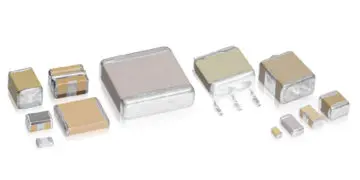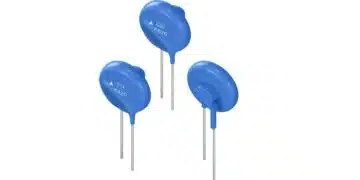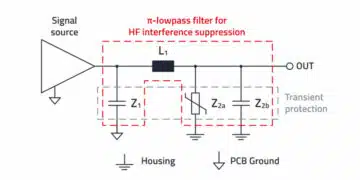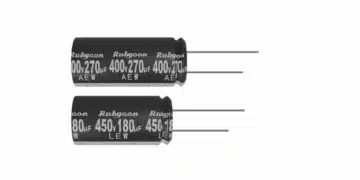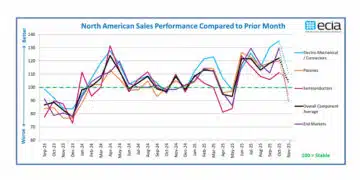Vishay Intertechnology, Inc. (NYSE: VSH) today introduced a new Automotive Grade IHDF edge-wound, through-hole inductor with rated current up to 72 A and saturation currents up to 230 A.
Featuring ferrite core technology and a low 15.4 mm maximum profile, the Vishay Custom Magnetics IHDF-1300AE-1A operates over a demanding temperature range from -55 °C to +155 °C with low AC and DC power losses and excellent heat dissipation.
Vishay Intertechnology, Inc. (NYSE: VSH) today introduced a new Automotive Grade IHDF edge-wound, through-hole inductor with rated current up to 72 A and saturation currents up to 230 A. Featuring ferrite core technology and a low 15.4 mm maximum profile, the Vishay Custom Magnetics IHDF-1300AE-1A operates over a demanding temperature range from -55 °C to +155 °C with low AC and DC power losses and excellent heat dissipation.
The edge-wound coil construction provides low DCR of 1.1 mΩ maximum, which minimizes losses and improves rated current performance for increased efficiency. Compared to competing ferrite-based solutions, the IHDF-1300AE-1A offers 75 % higher rated current. The device’s low profile package allows designers to meet the harsh mechanical shock and vibration requirements needed for AEC-Q200 qualification while minimizing board height to save space.
With an operating voltage up to 500 VDC, the AEC-Q200 qualified inductor is ideal for DC/DC converters, inverters, and motor and switching noise suppression. Target applications include high current, high temperature automotive systems, such as on-board chargers for electric (EV) and hybrid electric vehicles (HEV).
Vishay can customize the IHDF-1300AE-1A’s mounting orientation, termination type, nominal inductance, and isolation voltage rating on request. To reduce the risk of whisker growth, the inductor features a hot-dipped tin plating. The device is RoHS-compliant, halogen-free, and Vishay Green.
Features
- Low loss ferrite core for high performance designs with minimal ac power losses
- Low DCR losses that provides high rated current performance
- Low profile package – better for mechanical shock and vibration
- Hot dipped Sn plating provides low risk of whisker growth
- AEC-Q200 qualified
- Custom options are available
Applications
- High current and high temperature applications
- DC/DC converters
- High current motor and switching noise suppression
- Inverters
- On board chargers


